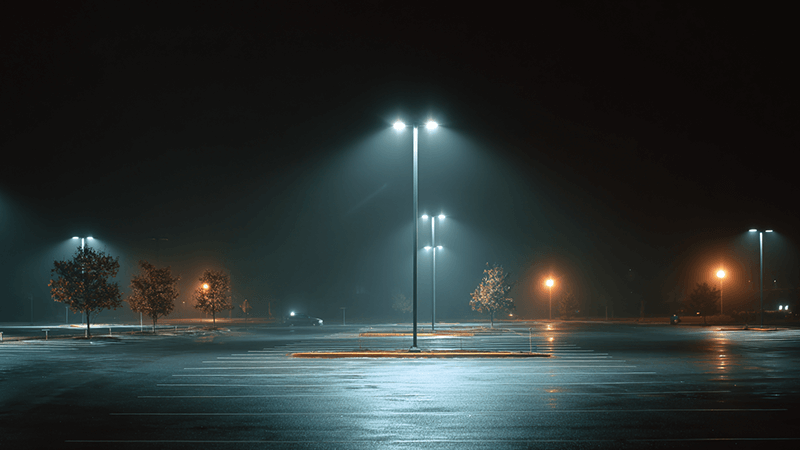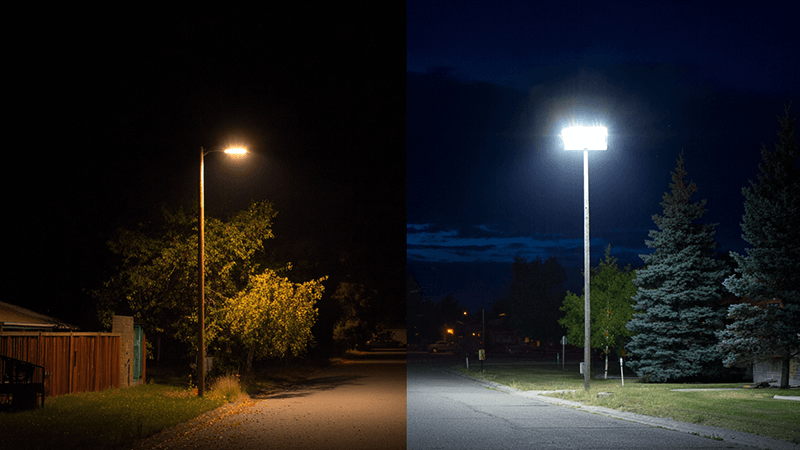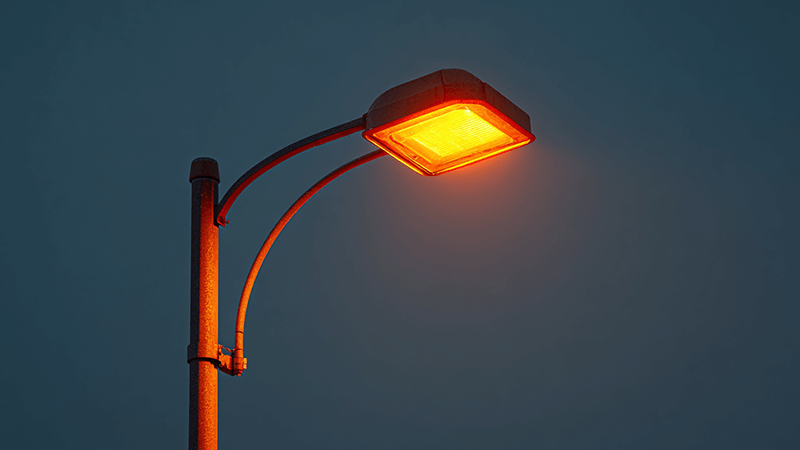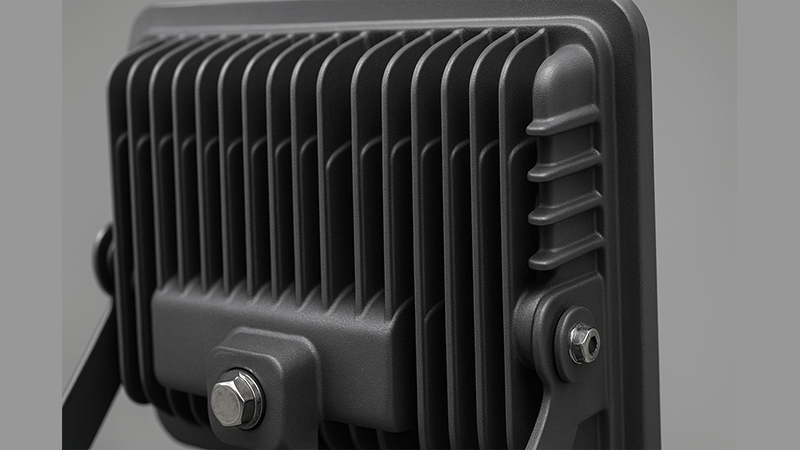Poor parking lot lighting creates serious safety risks and leads to high energy bills. Sticking with old technology is a costly mistake. You need a modern, efficient solution that works.
LED floodlights are the best choice for parking lots because they offer superior energy efficiency, a much longer lifespan, and better light quality. This reduces your operational costs and significantly improves safety and visibility for everyone.

When I first started in this business, the choices for powerful outdoor lighting were very limited and came with many problems. We had to deal with long warm-up times, high failure rates, and terrible energy consumption. Today, the technology has completely changed. Let’s look at exactly why LEDs have become the undisputed champion for illuminating parking lots.
Are LED floodlights better?
Are you wondering if upgrading to LED technology is actually worth the cost? Your old lights might seem to be working, but their hidden costs in energy and maintenance are draining your budget.
Yes, LED floodlights are significantly better. They use up to 80% less energy, last over 10 times longer than traditional lights, and provide clearer, more uniform illumination without any warm-up time.

In my years of manufacturing and supplying lighting, I’ve seen the transition firsthand. The facts are undeniable. LED technology isn’t just a small step forward; it’s a giant leap, especially for large areas like parking lots. Let’s break down the key advantages.
First, the energy savings are massive. A traditional 400-watt Metal Halide (MH) or High-Pressure Sodium (HPS) lamp can be replaced with a 100-watt or 150-watt LED fixture that produces the same amount of useful light. But the savings go deeper. As one of my insights points out, LED’s energy saving is not just about lower wattage. LEDs have a low starting current and maintain constant power, unlike old lights that can have huge power spikes when they turn on. This stability is better for your entire electrical system.
Second, the lifespan and maintenance benefits are a game-changer for any purchasing manager like Shaz. Traditional bulbs last maybe 20,000 hours, if you’re lucky. LEDs are rated for 50,000 to 100,000 hours. Think about what that means: fewer replacements, lower labor costs for sending crews up on lifts, and less disruption to the property. Plus, LED light output degrades very slowly over its life, while MH lights can lose 50% of their brightness long before they actually burn out. Also, LEDs can be switched on and off frequently without damaging them, which is perfect for controls like motion sensors.
Third, retrofitting is easier than you think. Many clients worry about the difficulty of an upgrade. But many modern LED floodlights are designed to be compatible with old mounting systems. I’ve worked on projects where we used LED fixtures whose mounting holes perfectly matched the old "batwing" style HPS fixtures. The crew simply removed the old lamp and installed the new LED in the exact same spot. No drilling, no new wiring on the pole. This cuts down installation time and costs dramatically.
Finally, the quality of light is simply better. LEDs provide a clean, white light that renders colors accurately (high Color Rendering Index or CRI). This makes it easier for people to find their cars and for security cameras to capture clear images. The yellow, hazy light from an HPS lamp just can’t compete.
| Feature |
Traditional (HPS/MH) |
LED Floodlight |
| Energy Use |
High (e.g., 400W) |
Low (e.g., 100-150W) |
| Lifespan |
10,000-24,000 hours |
50,000-100,000+ hours |
| Warm-up Time |
5-15 minutes |
Instant |
| Color Rendering |
Poor to Fair |
Excellent |
| Maintenance |
Frequent replacement |
Very infrequent |
| Durability |
Fragile bulbs |
Solid-state, robust |
Which type of light is often used to illuminate parking lots at night?
You see them everywhere, but do you know what they are? Old parking lot lights are common but incredibly inefficient, producing poor light while costing you a fortune in electricity bills.
Traditionally, High-Pressure Sodium (HPS) and Metal Halide (MH) lamps were the standard for parking lots. Today, however, LED technology has completely taken over as the primary choice due to its massive advantages.

Walking through an old industrial area, you can easily spot the different eras of lighting technology. For decades, project contractors and property managers had a very limited menu to choose from. Let’s look at the old players before we talk more about why LED is now king.
The Old Guard: HPS and MH
High-Pressure Sodium (HPS) lights were the workhorse for many years. You know them by their distinct, very warm, yellow-orange glow. Their main selling points were a relatively long lifespan for their time and decent energy efficiency compared to even older technologies. However, their biggest drawback is a terrible Color Rendering Index (CRI). Under HPS light, it’s very difficult to tell the difference between a dark blue car and a black one. This is a major security issue.
Metal Halide (MH) lights were seen as the premium alternative. They produce a much whiter, brighter light and have a significantly better CRI than HPS lamps. Because of this clearer light, they were often chosen for spaces where appearance and visibility were more important, like car dealerships and retail centers. The tradeoff? A shorter lifespan, higher cost, and a tendency for their light color to shift as they age. They also take a long time to warm up and even longer to cool down and restart after a power interruption.
The New Standard: LED
Then came the LED revolution. When I started my factory, we were still producing some components for traditional lighting. But we quickly saw the future. LED technology addresses nearly every single drawback of HPS and MH lights. They combine the long life of HPS with light quality that’s even better than MH. They are incredibly energy-efficient, saving up to 80% on electricity. They are also directional, meaning light can be focused exactly where it’s needed, reducing waste and light pollution. This is a feature neither HPS nor MH could offer, as they scatter light in all directions, requiring bulky reflectors to aim it. The fact that LEDs are instant-on and fully dimmable just adds to their dominance. Today, for any new parking lot project, LED isn’t just an option—it’s the only logical choice.
How many lumens should a parking lot light be?
Choosing the right brightness for a parking lot feels like a guessing game. If it’s too dim, you create a safety hazard. If it’s too bright, you waste money and cause glare.
A typical parking lot light fixture should produce between 15,000 and 30,000 lumens. The exact number depends heavily on factors like pole height, the distance between poles, and the specific lighting requirements of the area.

This is one of the most common questions I get from clients like Shaz. They want a simple number, but the right answer is always "it depends." Giving a customer the wrong fixture is a disservice, so it’s important to understand the factors at play. The goal isn’t just to buy a "bright" light; it’s to achieve the right level of light on the ground, which is measured in foot-candles (or lux). Lumens are what the fixture emits; foot-candles are what you actually get on the pavement.
The Illuminating Engineering Society (IES) provides guidelines for safe lighting levels. For a general parking area, a minimum of 1-2 foot-candles might be acceptable for basic safety. For a busy retail environment where customers are walking and cars are moving, you’d want 5 foot-candles or more to ensure high visibility and a sense of security.
Here are the key factors that determine the lumens you need from each fixture:
- Pole Height: The taller the pole, the more lumens you need to push enough light down to the ground. Light intensity drops off with distance.
- Pole Spacing: If poles are spaced far apart, you need fixtures with higher lumens or a wider light distribution pattern to ensure the area between them is adequately lit and there are no dark spots.
- Application: A small employee lot has different needs than a massive shopping mall lot. High-traffic areas with lots of pedestrians require more light than a simple storage yard.
To make it more practical, here’s a general guide I often share with my partners. This is a starting point, but a proper photometric plan is always the best approach for large projects.
| Pole Height (feet) |
Recommended Lumens (per fixture) |
Typical Use Case |
| 15 – 20 ft |
12,000 – 18,000 lm |
Walkways, small lots |
| 20 – 25 ft |
18,000 – 25,000 lm |
General retail, office lots |
| 25 – 35 ft |
25,000 – 40,000+ lm |
Large commercial lots, big-box stores |
Getting this right is a balance between safety, security, and budget. Choosing a partner who understands these calculations is critical to a successful lighting project.
Is there a downside to LED lights?
LED technology seems almost perfect, but you might worry about hidden problems. It’s a big investment, and you don’t want to discover unexpected issues down the road.
Yes, LEDs have a few downsides. The main ones are a higher initial purchase price and a sensitivity to high temperatures. Poor quality can also lead to issues with glare and premature failure.

I believe in being honest with my partners. No technology is perfect, and it’s important to understand the potential challenges so you can make an informed decision. Praising LEDs without acknowledging their weaknesses would be poor advice. Here are the real-world considerations.
The most obvious downside is the higher initial cost. An industrial-grade LED floodlight costs more upfront than its HPS or MH equivalent. This can be a barrier for some budgets. However, this is where you must think about the Total Cost of Ownership (TCO). A client of mine was hesitant, but when we calculated his ROI based on energy and maintenance savings, he saw that the LED system would pay for itself in under two years. After that, the significant savings were pure profit.
Another critical point is heat sensitivity. My insight mentioned that LED is a "cold light source," meaning the light beam itself doesn’t radiate heat like an incandescent bulb. However, the electronic components at the base of the LED chip get very hot during operation. If that heat isn’t managed, the LED will fail quickly. This is where quality manufacturing makes all the difference. A well-designed fixture will have a substantial heat sink—often made of die-cast aluminum with fins—to pull heat away from the electronics. A cheap fixture with a poor thermal design is a failure waiting to happen.
Finally, glare and poor light distribution can be a problem with badly designed LEDs. Because LEDs are so bright and directional, a fixture with no optical control can create intense, disabling glare and harsh shadows. This is why optics are so important. Professionals use specific distribution patterns like Type III or Type V to cast light evenly across a wide area without blinding drivers or pedestrians. Choosing a fixture with the right optics ensures the light is effective, not just bright.
In the end, all these potential downsides can be overcome by choosing a quality product from a reputable manufacturer. Investing in well-engineered lighting from a company that understands thermal management and optics is the key to avoiding these problems.
Conclusion
Upgrading to LED floodlights is a smart business decision. It drastically lowers your energy and maintenance costs, significantly improves safety, and provides reliable, high-quality performance for years to come.